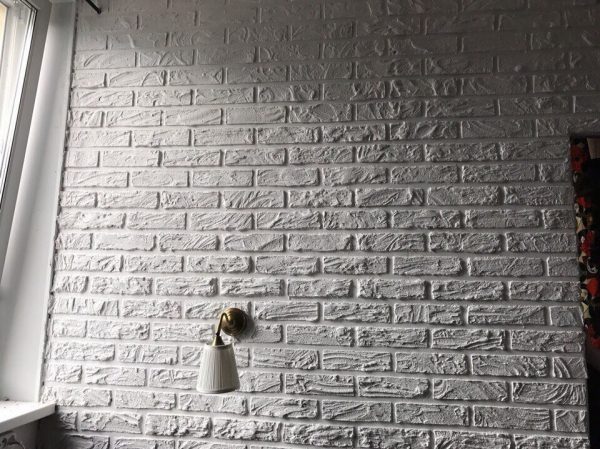Now in the construction market you can find a wide variety of finishing materials for indoor and outdoor use. For example, brick is a popular raw material for wall masonry. It is widely used for cladding external walls, as well as for interior decoration. There is also stucco under brick - a cheaper, but no less beautiful material, with which you can work with your own hands.
- Description and features of plaster
- Tools and consumables for working with brick plaster
- Preparing the base for plaster
- Removing old coating
- Alignment and sealing of defects
- Padding
- Preparation of the plaster composition
- Create a masonry simulation
- Scraper stitching
- Adhesive tape
- Using a stencil
- The formation of individual bricks
- Roller Application Technology
- Stucco finish
- Brick plaster - what to use
- Advantages and disadvantages of plaster
- Common mistakes
- Tips and tricks for working with plaster
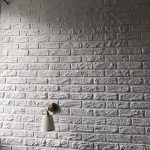
Description and features of plaster
Brick walls are widely used in different architectural styles - loft, industrial, shaggy chic, provence. They look stylish and attractive, although they have a certain external coldness. Brickwork is ideally combined with wood, glass, metal and ceramics, you can pick up any furniture to it. The disadvantage of the material is only its cost, so wall decoration will result in a decent amount.
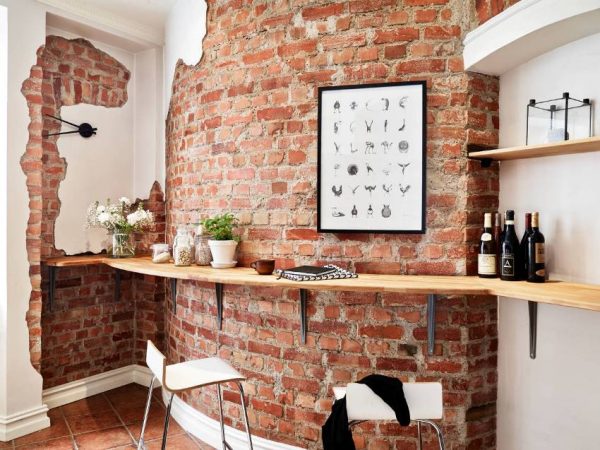
To simplify the work and reduce the cost of repairs, plaster imitating a brick surface is used. It gives the base relief, structurality, so its aesthetic qualities increase. Decorative stucco under a brick will become a modern and creative option for facing walls, arches, niches and some other surfaces. This finishing material is widely used in homes, cottages, apartments and offices.
Depending on the composition, the plaster is as follows:
- cement-sand;
- lime-sand;
- gypsum.
The most popular is the cement-sand mixture, which is the easiest to use and gives an excellent result. Any plaster contains additional components that provide it with the necessary properties (plasticizers, modifiers, pigments). Additives that increase frost resistance are also added to outdoor materials.

Tools and consumables for working with brick plaster
To perform construction and finishing works, a high-quality stucco mixture will be required, with the help of which an imitation of brickwork will be performed. If you plan to stain the composition, you need dry or liquid pigments of the selected shade. For priming, a deep penetration primer is needed. Among other things, for plastering work it is necessary to prepare:
- a container for diluting the solution;
- construction tape;
- spatulas of different sizes;
- drill with a whisk or construction mixer;
- Master OK;
- level;
- roller;
- stencils;
- rule
- scraper;
- alignment;
- old rags;
- newspapers or cellophane to protect the floor;
- gloves and a respirator.
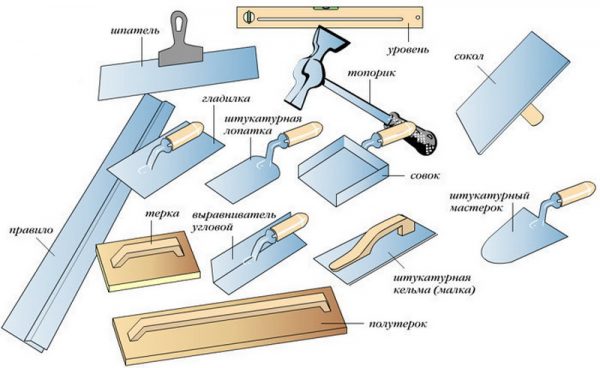
Preparing the base for plaster
To make the brick wall look even and beautiful, and the material has excellent adhesion to the base, you need to carefully prepare the wall. If the quality of preparation is low, the service life of the coating will be reduced.
Removing old coating
First, the old, peeling coating is removed. The best option is to completely get rid of the layer of plaster, putty. If this is not possible, only crumbling, poorly fixed areas are removed. The second method is quicker and less expensive, although the master risks making a mistake and in the near future to begin reworking.
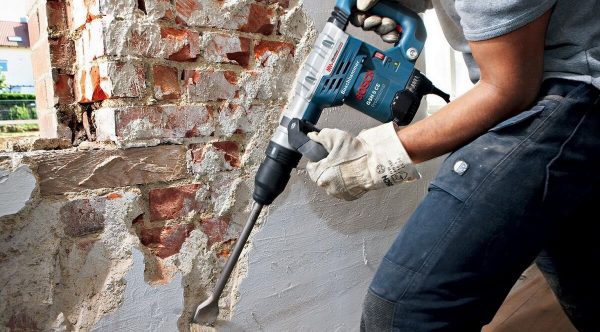
Alignment and sealing of defects
At the second stage, the walls are examined for pits, chips, cracks, damage to masonry joints. Defects must be covered with cement mortar, and large cracks are covered with the use of special reinforcing material. Then they polish the base, check its evenness with the building level and do the finishing with white putty.
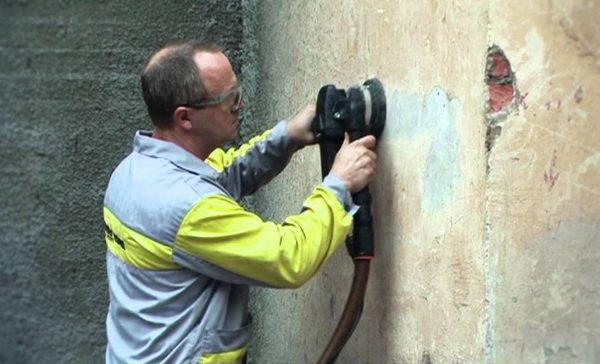
Padding
The primer is applied to strengthen the edges of microcracks on the base, which will prevent their expansion. Also, the soil improves the adhesion of the plaster to the wall and reduces the risk of crumbling. For processing, ready-made formulations are acquired or “cement milk” is made. For the preparation of "milk" dilute cement with water in a ratio of 1: 1. After priming, wait until the surface is completely dry. Only then do they begin to apply the plaster.
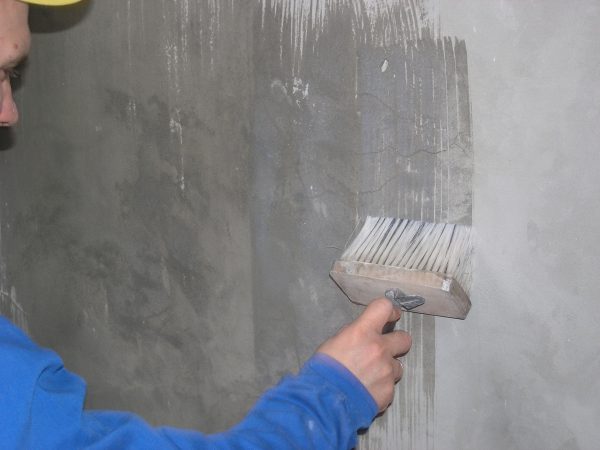
Preparation of the plaster composition
The building mixture can be purchased ready-made - it is sold in packages of 25-50 kg, diluted with water according to the instructions. Self-prepared mixes have also proven themselves well. You can choose any suitable composition from the following list:
- cement with sand in a ratio of 1: 3;
- cement with lime in a ratio of 1: 4;
- 1 part of lime dough, 3 parts of sand and 0.25 parts of clay;
- 1 part gypsum, 3 parts sand, 0.6 parts clay;
- chalk and gypsum in a ratio of 3: 1 with the addition of a small amount of wood glue.
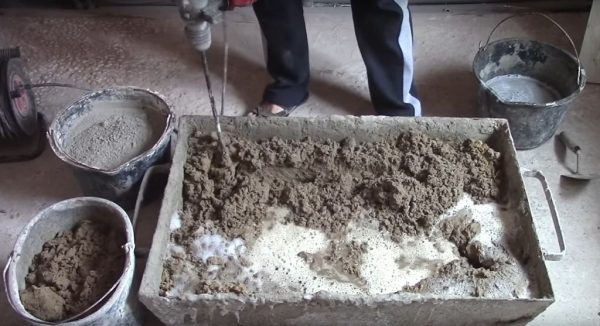
Dry ingredients are always immersed in water in portions and immediately thoroughly mixed with a construction mixer. If you change the sequence of mixing the components, the mass will go lumps, which will be impossible to break. Ready plaster should consist in consistency with thick sour cream. She must hold onto the trowel firmly and not drain from it.
to contents ↑Gypsum plasters harden quickly (in about 30-40 minutes), so you have to breed them in small portions. It is undesirable to use such materials in rooms with a high level of humidity, since gypsum strongly absorbs water. As for cement plaster, you can add a little ready-made tile adhesive to it - so the quality of the mixture will be higher.
Create a masonry simulation
Most often, an entire brick wall is made of plaster, where the individual elements are arranged in an orderly or chaotic manner. Full decoration of one wall is considered the optimal solution: too much brick finish in the room will make it look like a warehouse or basement. There are also other options for facing with stucco under a brick:
- imitation of pictures, panels;
- decoration of fireplaces;
- the design of the openings of arches, doors, windows, niches.
Finishing work can be done in many ways. It is possible to combine plaster with other materials - wallpaper, tile, paint. Most of the techniques described below require some skill. It is recommended to first practice on a rough surface and only then proceed to the main stage.
to contents ↑Scraper stitching
For work, you will need two metal spatulas: one 20-25 cm wide, the second 10 cm.You also need to prepare a scraper or a chisel, a rule with a width of 1.5-2 meters, lining and plaster. After the primer dries, a solution with a thickness of 0.5-1 cm is applied using spatulas, carefully leveled. A thicker layer cannot be performed - it will look unnatural. After some drying, the masses begin to draw the decor. To do this, apply the rule and draw the seams with a sharp plate of embroidery.
Usually, when forming a drawing, the standard dimensions of the brick (25 * 6.5 * 12 cm) are taken into account. Nevertheless, if desired, you can make a different decor - longer or, conversely, square. If you have the skills, you can draw textured, chipped, custom-shaped bricks. The main thing is that the “masonry” should look natural.
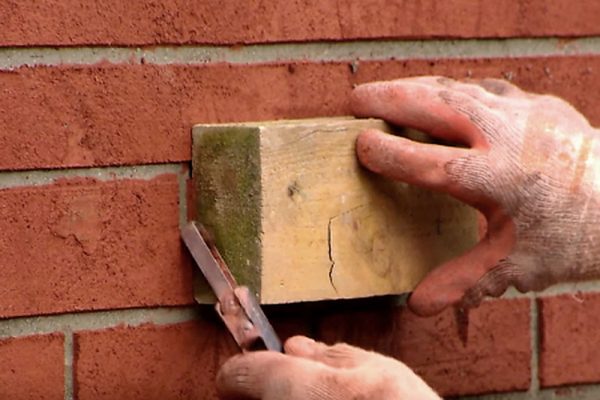
After the first stage is completed, final processing of the seams is started. Using a scraper, horizontal lines are first worked out, then vertical ones. Carefully carried out at the seams, removing excess plaster. Ready joints should have a depth of 3-6 mm. Appearing "fringe" at the seams immediately removed. In addition to the scraper, you can use the layout for work - it will give the drawing an interesting concavity or bulge. After the plaster hardens, the remaining flaws are removed with a suitable tool. Then the wall can be painted, the joints will have to pass with a narrow brush.
to contents ↑Adhesive tape
This technique is quite complicated. This is due to the difficulty of disconnecting the masking tape from the plaster. Typically, the method is practiced by professionals with sufficient experience. Act as follows:
- the primed base is marked with a pencil, drawing future seams;
- stick narrow tape tapes on the line (first horizontal, then vertical);
- prepare the plaster and put it on the wall, smooth it with a rule;
- after some drying, the plasters are gently pulled by the ends of the tape, removing it outward.
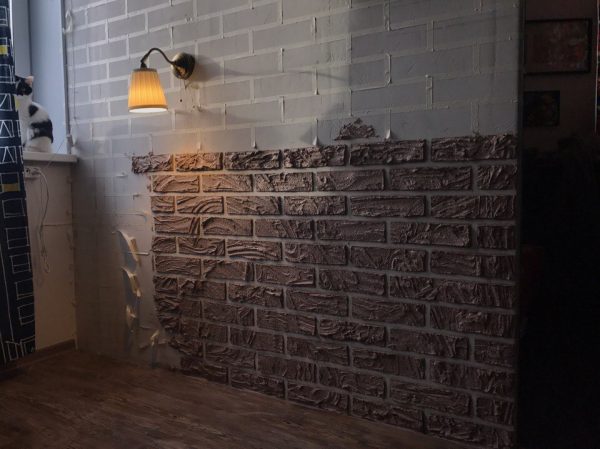
to contents ↑As a result, there are shabby marks on the wall - recesses in the “brickwork”. It is important not to wait until the solution has completely hardened, because getting the adhesive tape out from under it will be impossible. Further, the irregularities are corrected, and after drying the masonry, paint, varnish or other finish is applied.
Using a stencil
Brick wall plastering can be done using stencils. This method is uncomplicated, so it is ideal for beginners. You must purchase plastic or silicone stencils, and then do the work in this way:
- apply plaster to the base with a layer of 5 mm or more;
- wet the stencil with water, attach to the surface of the wall and press well;
- gently, gently remove the stencil so that the drawing is not smeared, but printed on the base;
- once again moisten the stencil, apply to the adjacent area, repeat all the manipulations;
- after drying, expose the wall to finishing.
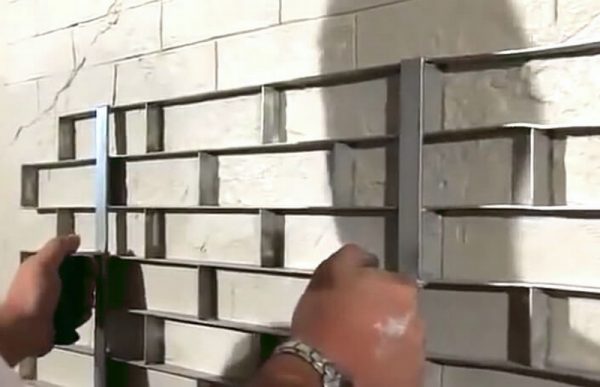
You can use other screening techniques, which will require old linoleum. A large stencil in the form of a grid is cut out of this material, attached to a wooden frame, which can be conveniently held and removed. Plaster is applied to the base, leveled by the rule, a stencil is applied to a specific area with linoleum inside. On top perform another layer of plaster with a thickness of 5 mm, smooth. Carefully remove the stencil, after correcting minor flaws.
to contents ↑The formation of individual bricks
In this technique, a scraper is also used, which produces seams from the plaster. Initially, the solution is applied to the wall in a similar way, it is well leveled, it is partially dried. After imposing the rule, they carefully mark the walls, drawing thin lines with any suitable tool.
Then they begin to work with a scraper. Spend them along the lines, drawing each brick individually. Using a dry cloth, sweep away the rest of the plaster from the base.It is advisable not to apply the plaster on areas that are too large in area, since it can tightly grasp before final design. This technique gives an amazing result, but it takes a lot of time and is difficult for beginners.
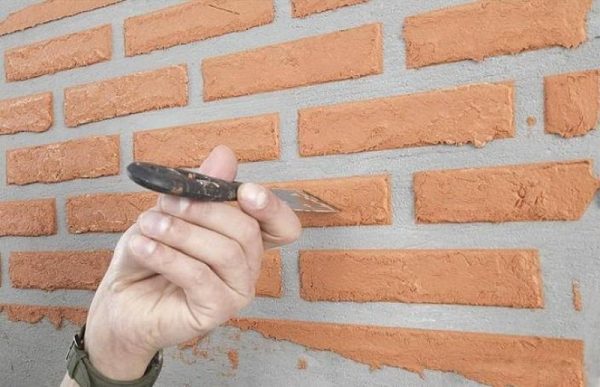
Roller Application Technology
Another way to create an imitation of masonry from plaster is to use a special textured roller. It is necessary to pick up a roller in a hardware store, on the surface of which a drawing in the form of separate bricks is applied. They roll the base after applying the plaster. Depending on the size of the roller in one pass, 2-4 rows of “masonry” on the plaster are obtained.
To finish looking beautiful, when you press the roller, the force should be the same for all rows. You should also work at the same speed, otherwise it will not be possible to achieve the integrity of the canvas. If the plaster has dried out very much, its surface must be sprayed with water from the spray gun. Each next row must be carefully shifted, and at an equal distance - this will help bring the imitation as close as possible to the real masonry.
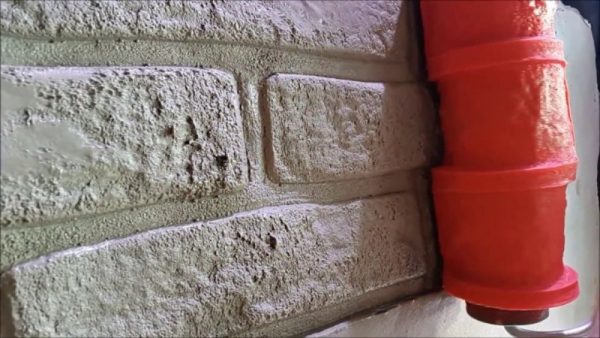
Stucco finish
Final finishing is only started after the plaster has completely dried, otherwise its layer may be damaged. Using emery paper with different grain sizes remove sagging, drips, frozen spray and other defects that violate the beauty of the picture. After brushing off the dust from the coating with a soft brush or cloth.
As the treatment is completed, the plaster is primed. The primer is applied with a strong brush, since there will be leftover areas from the roller. First, the coating is primed with a large brush, then a narrow one to process the seams. After drying the primer, they start painting the masonry, which is also done with two brushes. Staining can be monophonic, or with highlighting the seams in a contrasting color. The top layer is usually a lacquer coating, without which the paint will quickly fade, darken. After applying moisture-resistant varnish, imitation masonry can be washed without restrictions.
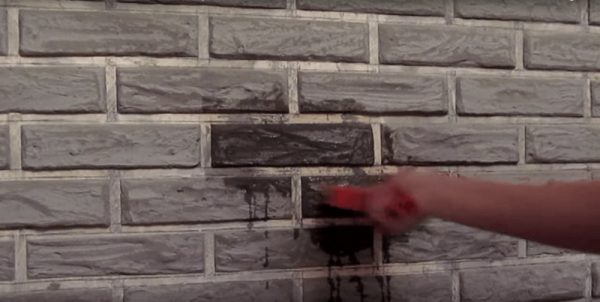
Brick plaster - what to use
The shade for the brick surface is selected taking into account the general style of the room, the colors and combinations used. For example, provence practices painting walls in white tones, as well as in other light, pastel shades. Brickwork can be as close to natural as possible: then it is painted with red-brick, terracotta color. Also suitable for coloring are gray, orange, brown, chocolate tones. For work, latex and acrylic water-based paints are used, and for outdoor work - alkyd enamels. As a topcoat, use matte acrylic varnish.
to contents ↑
Advantages and disadvantages of plaster
Stucco under a brick has a lot of advantages, so it is so in demand during the repair work. Here are the main advantages of coverage:
- ease of application, no need for inviting masters;
- reasonable price of the material (not more expensive than ordinary wallpaper);
- the possibility of coloring in any color or several shades;
- aesthetic appeal, relief and unusual coating;
- lack of the effect of hiding space (the finish takes up a minimum of space);
- light weight imitation masonry, suitable for all substrates, even from GCR;
- ease of operation, care;
- environmental friendliness, safety for residents;
- additional thermal insulation, soundproofing of the room;
- long service life, resistance to abrasion, mechanical stress;
- the possibility of repainting over time;
- resistance to moisture and heat;
- suitability for any interior, versatility.
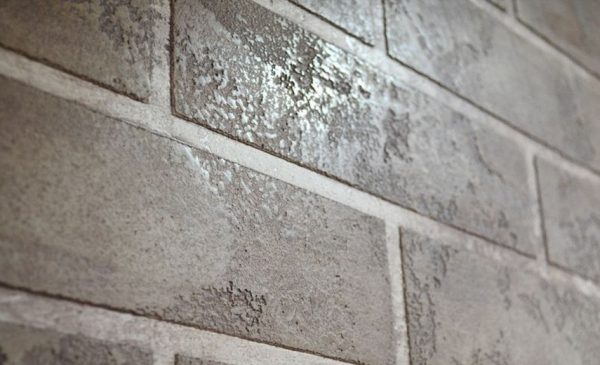
to contents ↑Of the minuses, it is worth noting the need for thorough preparation of the walls before applying the plaster. Dust can accumulate in the seams of the masonry, so cleaning will have to be done more often.
Common mistakes
Most often, beginner finishers do not wait for the right time before the plaster dries, proceeding to apply the drawing. This leads to sloppy, blurred lines. Another common mistake is the drying of the walls, as a result of which a pattern is not formed on them. When using the technique of sticking tape, its tips can be recessed into the wall. It is no longer possible to get strips of adhesive tape from under the plaster.
to contents ↑Tips and tricks for working with plaster
In order for the imitation of masonry with the help of plaster to turn out really high-quality and beautiful, you need to follow these tips:
- if there is no proper experience, do not conduct experiments with the independent preparation of the solution, but buy the finished mixture;
- when buying or diluting plaster, always take into account the characteristics of the room (wet, unheated, highly polluted, etc.);
- to increase the strength of the walls, use reinforcing masonry, especially at windows, at corners;
- to carry out the preparatory work correctly, be sure to align the walls well, if necessary, treat them with an antiseptic and sealant - the life of the brickwork depends on this;
- if imagination allows, apply sponges, brushes, washcloths and other improvised means to give plaster even more decorative.
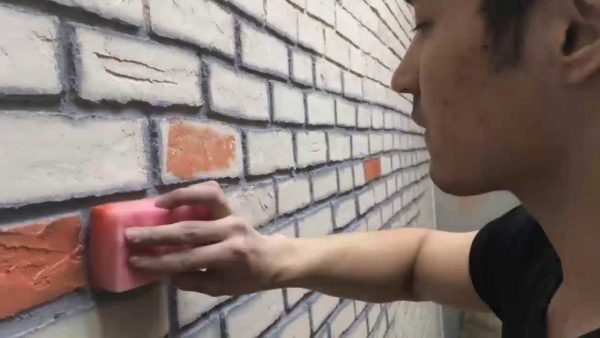
Brick stucco is a very popular and inexpensive solution for finishing work. It is suitable for different interiors, fits perfectly into homes and offices. Due to the variety of topcoats, everyone can choose the right option!



